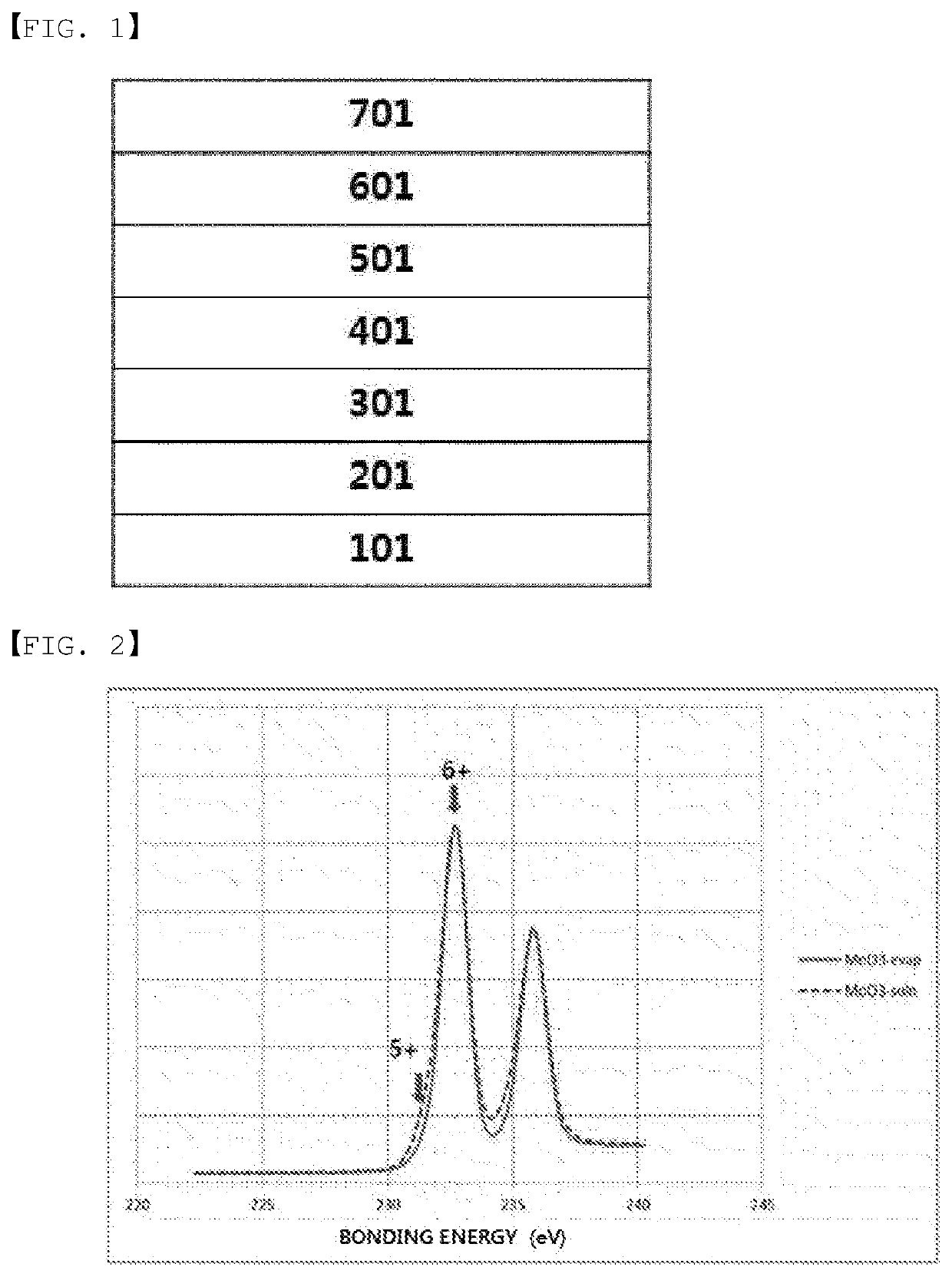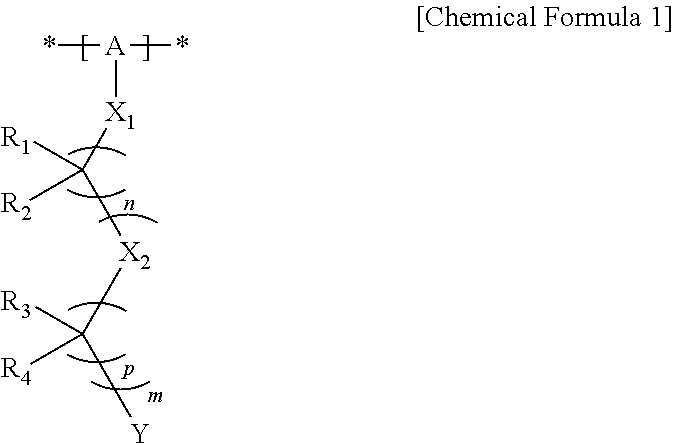Coating composition, method for producing organic electroluminescent device using same, and organic electroluminescent device produced thereby
a technology of organic light-emitting diodes and coating compositions, which is applied in the direction of polyether coatings, coatings, solid-state devices, etc., can solve the problems of high equipment investment costs and process costs, high waste of materials, and high percentage of waste without being deposited on the substrate, so as to improve the effect of coating, easy removal, and smooth conversion
- Summary
- Abstract
- Description
- Claims
- Application Information
AI Technical Summary
Benefits of technology
Problems solved by technology
Method used
Image
Examples
example 1
[0115]After washing an ITO-coated glass substrate consecutively with water and isopropanol, a solution obtained by mixing MO2(acac)2 and Nafion (following structural formula A) in a ratio of 9:1 and dissolving the result in ethylene glycol monomethyl ether was spin coated on the ITO-deposited base for seconds at 3000 rpm. The obtained thin film was heat treated for 15 minutes at 200° C. under oxygen atmosphere to form a very uniform hole injection layer having a thickness of 30 nm.
[0116]On the top of the hole injection layer, a hole transfer layer having a thickness of 400 Å was formed using a spin coating method by dissolving a hole transfer material represented by the following Chemical Formula B in toluene.
[0117]On the hole transfer layer, a light emitting layer having a thickness of 300 Å was formed by doping BD, a blue dopant, to BH, a blue fluorescent host, in a weight ratio of 95:5.
[0118]Subsequently, on the top of the light emitting layer, an electron transfer layer and an e...
example 2
[0121]A device was manufactured in the same manner as in Example 1 except that the thin film was treated under nitrogen atmosphere.
example 3
[0122]A device was manufactured in the same manner as in Example 1 except that EW825 of 3M (following Chemical Formula D) was used instead of Nafion.
[0123]
PUM
| Property | Measurement | Unit |
|---|---|---|
| thickness | aaaaa | aaaaa |
| temperature | aaaaa | aaaaa |
| boiling point | aaaaa | aaaaa |
Abstract
Description
Claims
Application Information
 Login to View More
Login to View More - R&D
- Intellectual Property
- Life Sciences
- Materials
- Tech Scout
- Unparalleled Data Quality
- Higher Quality Content
- 60% Fewer Hallucinations
Browse by: Latest US Patents, China's latest patents, Technical Efficacy Thesaurus, Application Domain, Technology Topic, Popular Technical Reports.
© 2025 PatSnap. All rights reserved.Legal|Privacy policy|Modern Slavery Act Transparency Statement|Sitemap|About US| Contact US: help@patsnap.com



